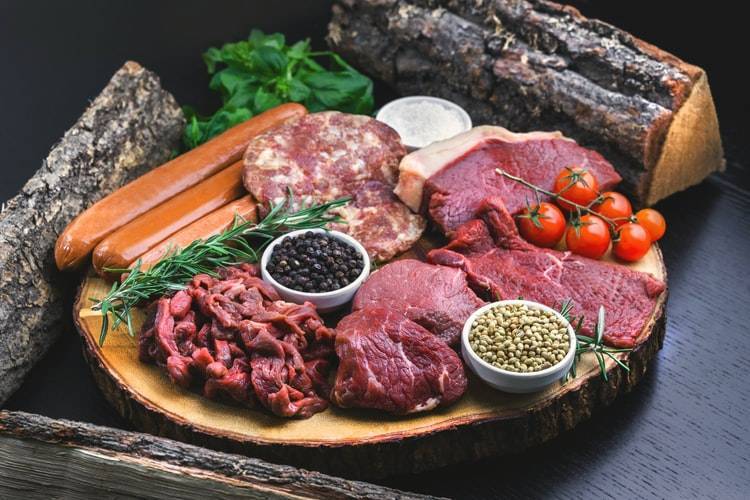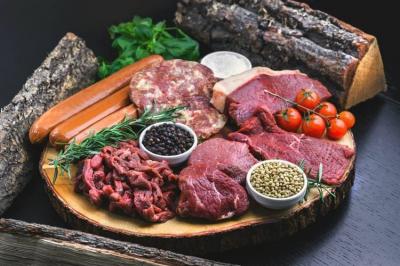Many people practice unhealthy dietary habits during Eid al-Adha, indulging in excessive amounts of meat, which can lead to various health problems. Each year, doctors and nutrition specialists repeat warnings about the necessity of "not overeating" large quantities of meat during the holiday. Here are 6 key points to know before consuming meat during Eid al-Adha, providing a guide of health advice for safe meat consumption in appropriate quantities, distinguishing between different meat types and their nutritional values, as well as the specifications for the accompanying "second dish" with the main meal, as explained by obesity and therapeutic nutrition consultant Dr. Mustafa Sari on Sky News Arabia.
#### Types of Meat
Firstly, Sari emphasizes the importance of distinguishing between different types of meat, particularly the nutritional value found in sheep and beef. He states: "Beef is easier to digest than sheep meat, while the fat content in both is quite similar (sheep meat has a slightly lower fat percentage). The protein level is higher in beef, with the calorie content in sheep meat reaching 223 kcal and in beef 225 kcal."
The second concern he addresses relates to the nutritional components found in both beef and sheep meat, explaining that they contain a very high percentage of vitamins, minerals, and selenium, in addition to antioxidants and quality protein for muscle building. They also provide B12, which helps improve mood and brain function, alongside magnesium and potassium.
#### Best Cuts
Thirdly, Sari describes the best areas of the sacrifice's body that contain meat of high nutritional and health value, saying: "The cut of the meat itself determines its overall caloric content. The lowest calorie content is found in the thigh area because the fat percentage is low, whether for sheep or beef, as opposed to the belly area, which contains a high fat percentage." He points out that the best cut is "the face of the thigh" due to its low caloric content.
#### Cooking Method
Fourthly, the nutrition consultant discusses the often-overlooked "cooking method" of the meat. He clarifies that "the best cooking method for meat is boiling, and it is preferred to discard the broth; this way, fat is removed from the meat into the broth." The second-best method is "grilling," a common practice among many during Eid, with people keen to grill at home or on rooftops in some open areas. However, he emphasizes the important parameter in "grilling" meat, specifically regarding the distance of the meat cuts from the fire, stating that "a distance of 25 to 30 cm should be maintained to prevent the meat from burning."
#### The Second Dish
Fifthly, Sari talks about the "second dish," which he regards as being as important as the main meal (meat), suggesting that one should always consume a vegetable dish or green salad alongside the meat quantities. He also recommends that the second dish contains "parsley," as vitamin C helps absorb the fat present in the meat. Additionally, the nutrition consultant advises drinking an adequate amount of water to facilitate kidney function, promoting efficient operation. He also recommends movement and avoiding inactivity to support the digestion process, as many people tend to be inactive after consuming heavy meals during the holiday, which is a health concern.
Regarding sugars and sweets, Sari advises against excessive consumption of sweets and soft drinks with the meal. In parallel, he does not recommend consuming "fats," which are the internal components of the sacrifice (such as lungs, intestines, kidneys, and trotters), because they are high in fat and have very low nutritional value. He adds that one should avoid extravagance in consuming large quantities of them; if they are to be eaten, it should be in the form of "samples" or tasting during Eid, particularly since they can cause digestive problems and increase cholesterol levels.
#### Meat Quantity
The sixth point relates to the recommended quantity of meat to consume. In this context, the therapeutic nutrition specialist indicates that "it is commonly advised that the amount of meat consumed per week should be one gram for every kilogram of a person's weight, not exceeding half a kilogram weekly." He concludes by advising heart and kidney patients to consult their treating physician to clarify the amount of meat they should consume based on their condition.




